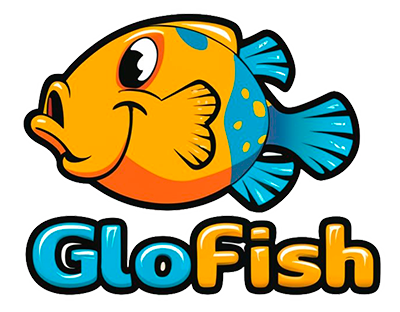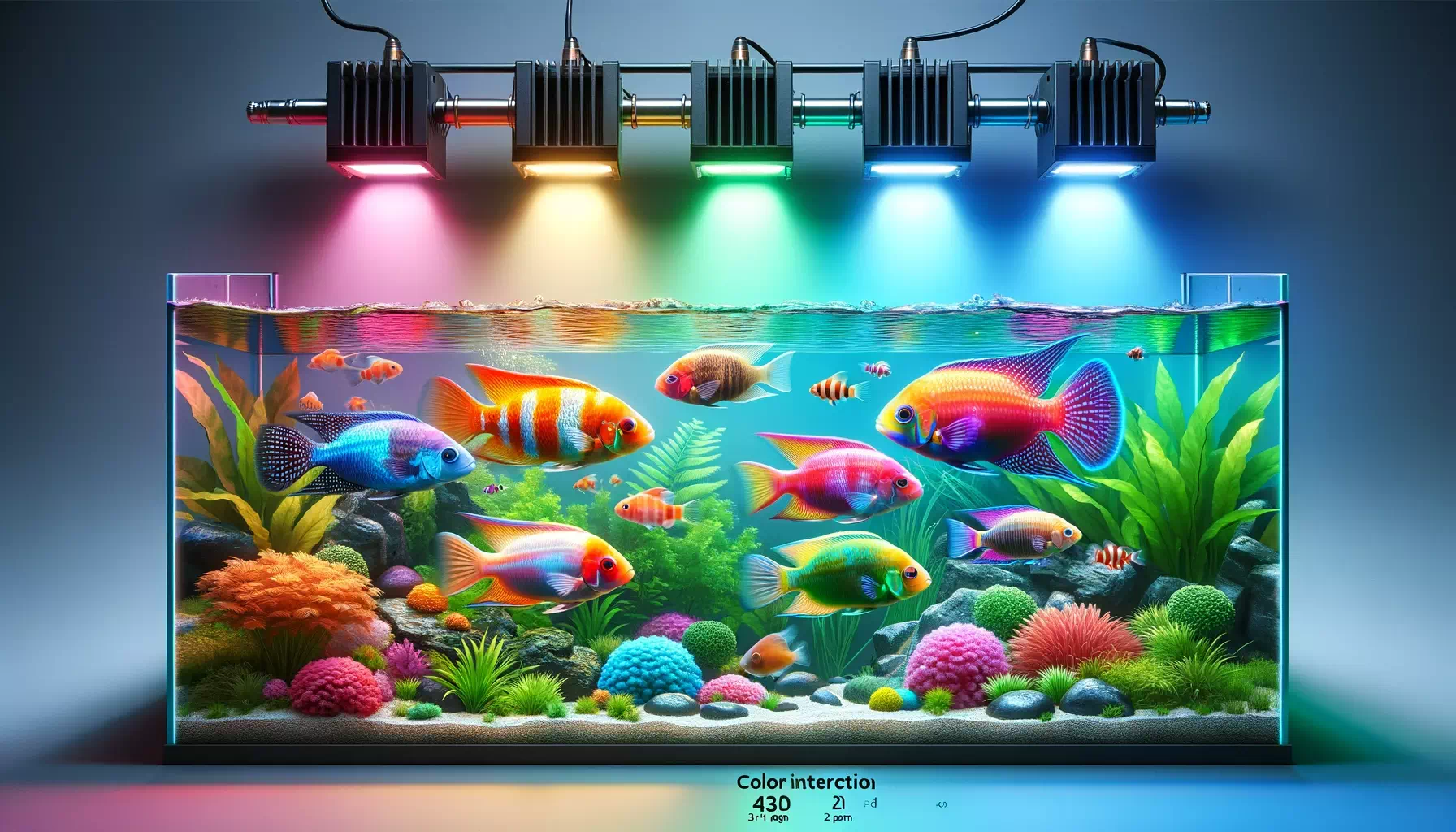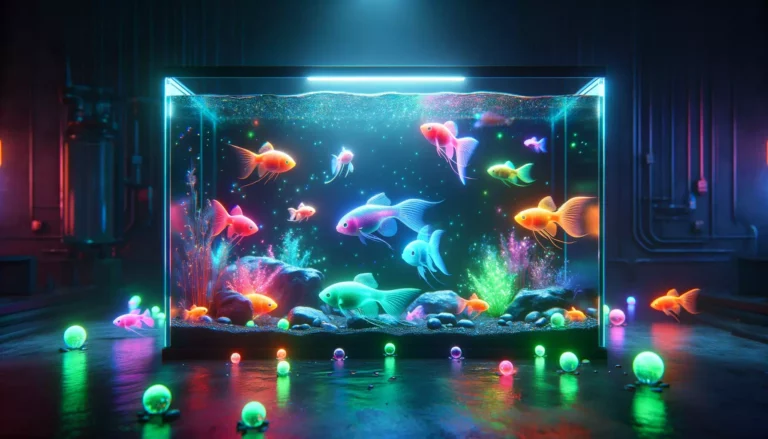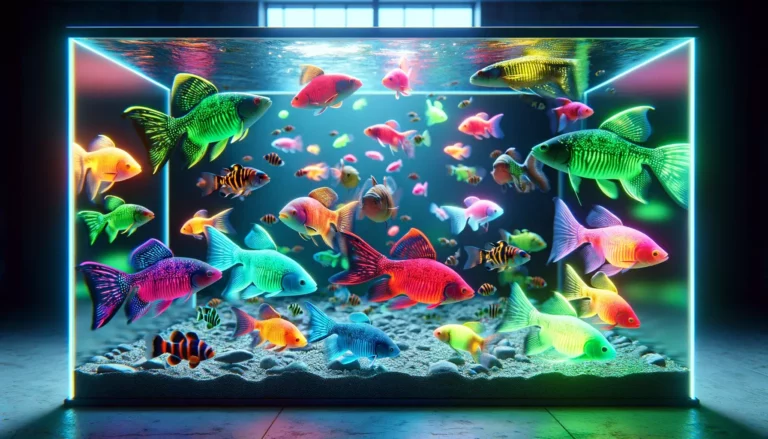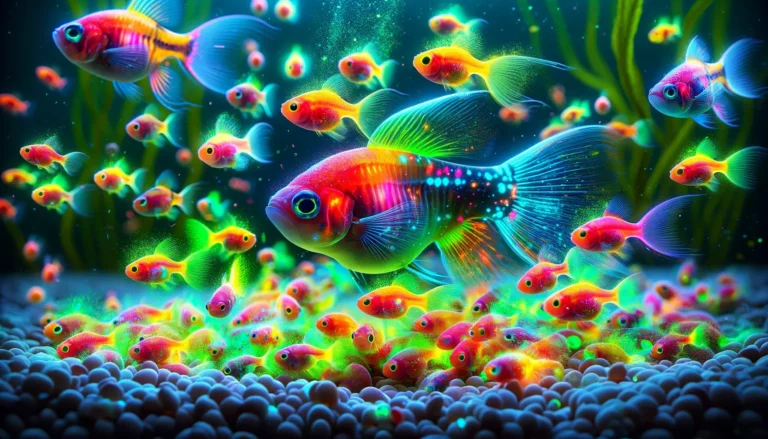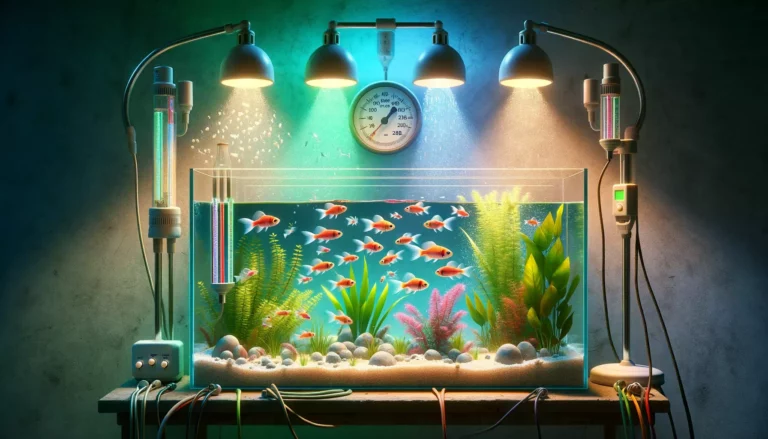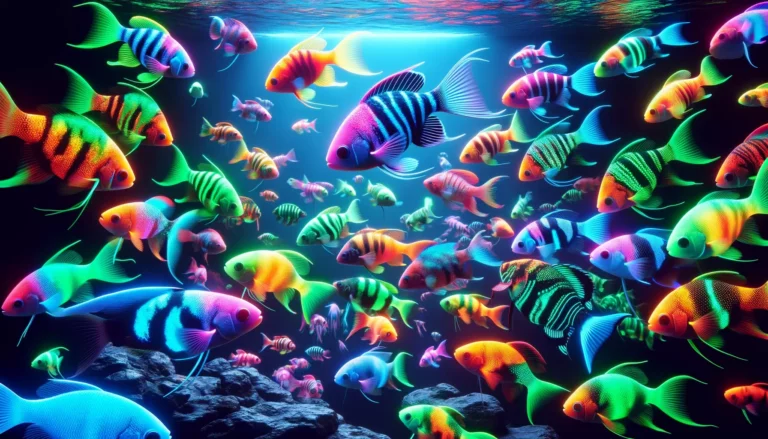The influence of different GloFish species on each other when placed together
In mixed-species GloFish tanks, hierarchies often form naturally. Dominant fish may claim territories or show assertive behavior. Common signs of a dominant GloFish include frequent chasing or nipping. Submissive fish, conversely, might avoid others or hide often. Each species has unique behaviors, so dominance signs can vary. Observing your tank regularly helps understand these dynamics. Note, overcrowding can intensify these behaviors. Providing ample space and hiding spots can mitigate stress and aggression.
Balanced tank dynamics require understanding each species’ temperament. Some GloFish are naturally more assertive. Identifying these traits helps in creating a harmonious environment. When introducing new fish, do it gradually. This prevents sudden hierarchy disruptions. Monitoring during feeding times is crucial. Dominant fish might overeat, leaving less for others. Ensuring food reaches all tank areas can prevent this. Remember, a peaceful hierarchy leads to healthier fish and a more vibrant aquarium.
Interaction with Other Aquarium Inhabitants
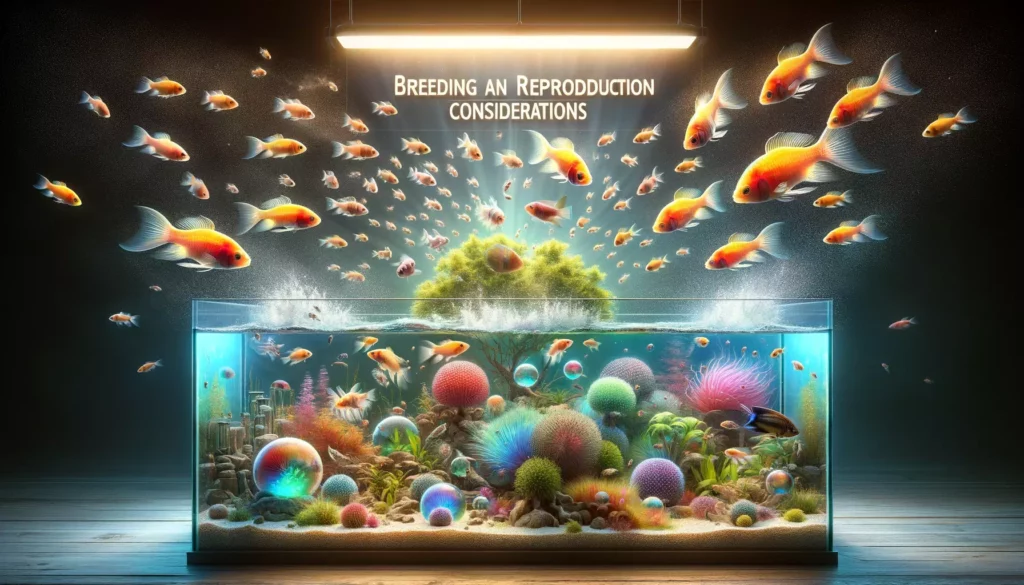
GloFish, known for their vivid colors, generally coexist peacefully with other tank mates. However, compatibility varies based on species. Most GloFish are community-friendly, but their interaction with other aquarium inhabitants should be monitored. For instance, GloFish might outcompete slower, shyer species during feeding. Ensuring ample food and feeding spots can help.
Invertebrates like snails and shrimp can coexist with GloFish. Yet, the tank environment must cater to all. This includes proper hiding spots and a balanced diet. Some GloFish might nip at slow-moving or long-finned tank mates. Observing your tank’s dynamics aids in maintaining harmony.
Compatibility extends beyond behavior. Water parameters and tank setup are crucial. GloFish thrive in specific conditions. These should align with those of other inhabitants. Regular water tests and tank maintenance ensure a healthy environment for all.
In sum, most GloFish are community-friendly but individual behavior varies. Understanding each species’ needs and temperament is key. This ensures a thriving, diverse aquarium community.
Environmental Impact
Filtration and Water Circulation Needs
When housing different GloFish types together, the tank’s filtration and water circulation needs may change. Adequate filtration is crucial to handle the bioload from multiple fish. More fish means more waste. Thus, a robust filtration system is vital. It keeps the water clean and maintains healthy nitrate levels.
GloFish, like all fish, thrive in stable water conditions. A good filter supports this by removing harmful substances. It also oxygenates the water, crucial for fish health. When choosing a filter, consider the tank size and the total number of fish. Overcrowding can strain the system. Ensure your filter’s capacity exceeds your tank’s bioload.
| Aspect | Importance | Recommendations |
|---|---|---|
| Filtration | Crucial for handling bioload from multiple fish | – Choose a robust filtration system. |
| – Consider tank size and fish quantity. | ||
| – Ensure filter capacity exceeds bioload. | ||
| – Regularly clean or replace filter media. | ||
| Water Circulation | Equally important for distributing heat and nutrients | – Create a gentle, consistent water flow. |
| evenly, and maintaining oxygen levels | – Position filter output for ideal flow. | |
| – Promotes GloFish swimming and reduces | ||
| stress. | ||
| General Tips | Maintain stable water conditions for GloFish | – Choose a filter that removes harmful |
| substances and oxygenates water. | ||
| – Avoid overcrowding to prevent strain on | ||
| the filtration system. | ||
| – Regularly maintain and clean the filter | ||
| for optimal performance. |
Water circulation is equally important. It distributes heat and nutrients evenly. Good circulation ensures all tank areas are well-oxygenated. For GloFish, a gentle flow is ideal. It supports their swimming and prevents stress. When setting up your tank, position the filter output to create a gentle, consistent water flow.
Remember, regular maintenance of your filtration system is key. Clean or replace filter media as recommended. This ensures optimal performance and a healthy tank environment.
Plant Life and Decorations
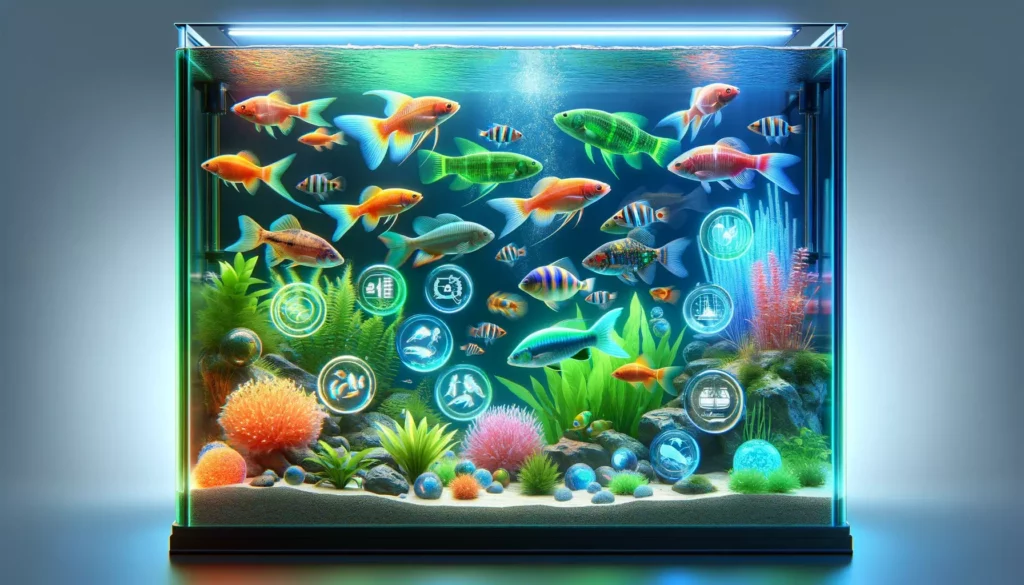
GloFish appreciate a vibrant, well-decorated tank. However, their needs for plant life and decorations can vary. Plants and decorations offer hiding spots and reduce stress for GloFish. Live plants also contribute to water quality by absorbing nitrates.
When selecting plants, consider the light and substrate needs. Some GloFish, like GloTetras, prefer denser foliage. This provides hiding spots and mimics their natural habitat. Hardy plants like Java Fern or Anubias are good options. They thrive in various conditions and are low-maintenance.
Decorations should be chosen with care. Avoid sharp edges that can harm the fish. Caves, rocks, and driftwood make great additions. They offer shelter and add to the tank’s aesthetic appeal. Ensure all decorations are properly anchored. This prevents accidental shifts that could stress the fish.
The color of plants and decorations can also impact your tank’s appearance. Bright colors can enhance the glow of your GloFish. Yet, a balance is important. Too many bright colors can overshadow the fish. Aim for a mix that highlights your GloFish and creates a visually appealing environment.
In conclusion, the right mix of plants and decorations creates a functional and beautiful habitat. It supports the health and well-being of your GloFish, making your aquarium a stunning focal point.
Stress and Health Concerns
Identification of Stress Markers
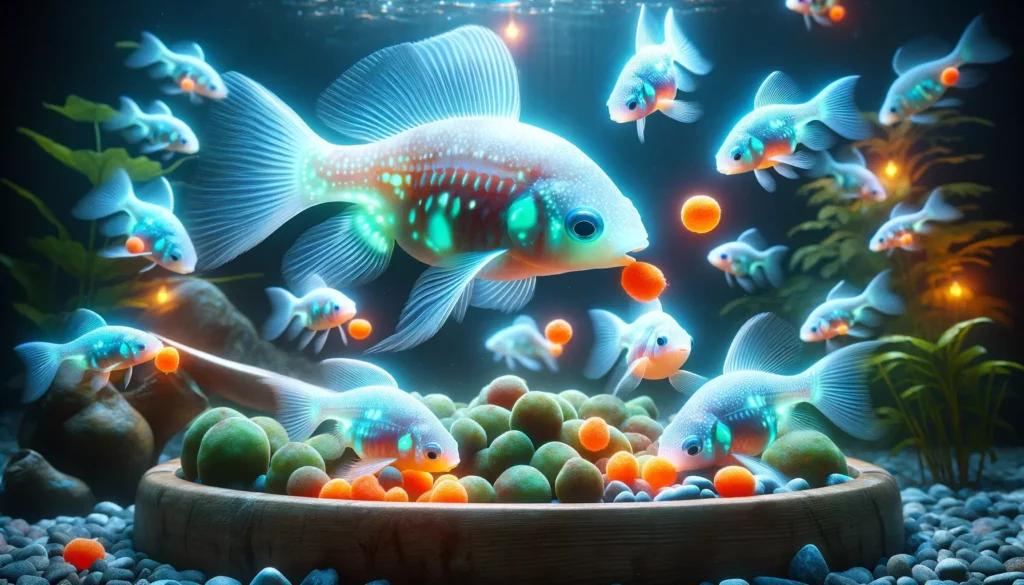
Identifying stress in GloFish is key to maintaining their health. Look for changes in behavior or appearance as stress indicators. Common signs include decreased appetite or hiding more than usual. Stressed fish might also swim erratically or display aggression. Physical signs like faded colors or clamped fins are concerning too. Rapid gill movement can indicate distress, often related to poor water quality.
Each GloFish species may exhibit unique stress signals. For instance, a GloFish that usually swims in a group but starts isolating itself may be stressed. Monitoring your fish’s normal behavior helps spot unusual changes. Regular observation is essential. It helps detect issues early, allowing prompt action to address potential stressors.
Preventive Measures for Stress Reduction
Preventing stress in a GloFish tank involves several key strategies. First, maintain optimal water conditions. Regularly test the water for pH, ammonia, nitrites, and nitrates. Keep the tank clean and perform regular water changes.
Proper tank setup is crucial. Ensure the tank is spacious enough for the number of fish. Overcrowding can lead to stress and aggression. Include plenty of hiding places like plants or decorations. This gives fish their own space and a sense of security.
Feeding your GloFish a balanced diet is important. It keeps them healthy and reduces stress. Feed them high-quality food and vary their diet when possible. Overfeeding can lead to poor water quality, so feed them the appropriate amount.
| Preventive Measure | Importance | Recommendations |
|---|---|---|
| Water Quality | Maintain optimal water conditions | – Regularly test pH, ammonia, nitrites, and |
| nitrates. | ||
| – Keep the tank clean and perform regular | ||
| water changes. | ||
| Tank Setup | Ensure a spacious tank with hiding places | – Avoid overcrowding to prevent stress and |
| aggression. | ||
| – Provide hiding places like plants or | ||
| decorations for security. | ||
| Diet | Feed a balanced diet for overall health | – Offer high-quality food and vary their |
| diet when possible. | ||
| – Avoid overfeeding to maintain water quality. | ||
| Introducing New Fish | Carefully introduce new fish | – Quarantine new arrivals to prevent disease |
| spread. | ||
| – Gradually introduce them to the main tank | ||
| to reduce stress for existing fish. | ||
| General Tips | Regular observation and proper management | – Monitor fish behavior for signs of stress. |
| – Maintain a healthy environment with proper | ||
| filtration and water circulation. | ||
| – Ensure all equipment is functioning | ||
| correctly. | ||
| – Provide appropriate lighting and | ||
| temperature levels. |
Introducing new fish carefully is another important measure. Quarantine new arrivals to prevent disease spread. Introduce them to the main tank gradually. This helps existing fish adjust to their new tank mates without stress.
In conclusion, understanding and mitigating stress in GloFish is vital for their well-being. Regular observation, proper tank management, and a healthy environment are key. This ensures your GloFish lead vibrant, stress-free lives.
Breeding and Reproduction
Control of Breeding
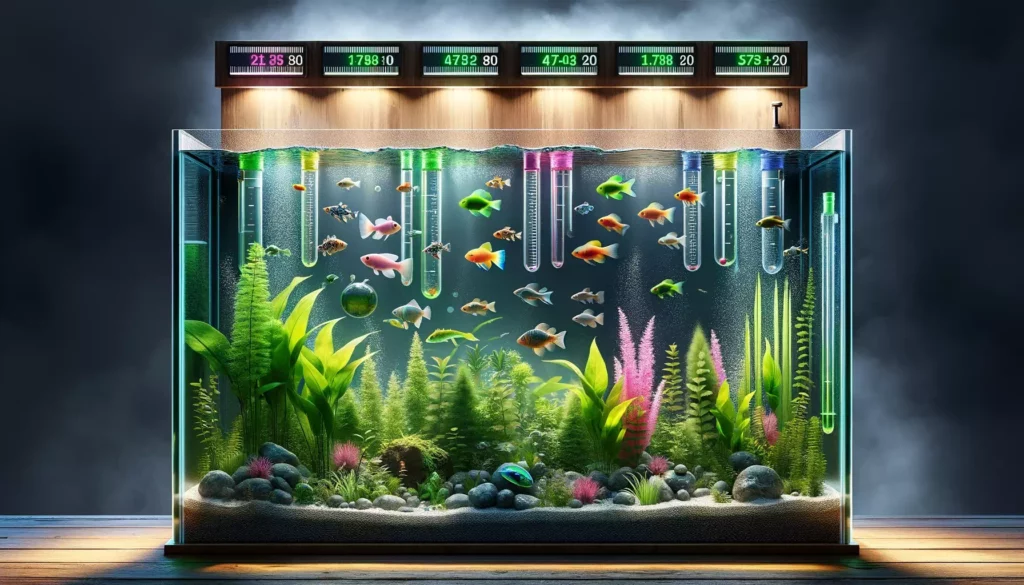
Controlling breeding in a community tank is important to prevent overpopulation and ensure the health of GloFish. To manage breeding, first, understand the breeding habits of your GloFish species. Some GloFish breed more readily than others.
One method to control breeding is to keep only one gender in your tank. This is the most foolproof way to prevent breeding. However, determining gender in GloFish can be challenging and may require research or expert advice.
Another strategy is to adjust the tank environment. Breeding can often be triggered by conditions such as increased temperature or abundant food. Maintaining stable conditions can help discourage breeding.
Lastly, be prepared to remove eggs or fry if they appear. This requires vigilance and may not be suitable for all aquarists. However, it’s a direct way to control population. Ensure you have a plan for the removed fry, whether it’s raising them separately or finding them new homes.
Offspring Viability
The viability of offspring from mixed-species GloFish pairings can vary. Generally, GloFish are genetically modified and their offspring may not always inherit the fluorescent gene. This means some fry may not display the bright colors of their parents.
The health and survival rates of these offspring depend on various factors. This includes the compatibility of the parent species and the conditions in the tank. Proper care, including optimal water conditions and nutrition, is crucial for the fry’s survival.
It’s also worth noting that breeding different species of GloFish might result in offspring with unpredictable traits. These traits can include temperament, size, or coloration. While some aquarists find this variability intriguing, it’s important to be prepared for the unexpected.
In conclusion, while breeding GloFish can be an interesting aspect of aquarium keeping, it requires careful consideration and planning. Understanding the specific needs and behaviors of your GloFish will help in controlling breeding and ensuring the health and well-being of any offspring.
Diet and Nutrition
Feeding Schedules and Routines

Adjusting feeding schedules for different GloFish species in the same tank is crucial for their health. Each species may have specific dietary needs and feeding habits. It’s important to research and understand these requirements. Generally, feeding GloFish 1-2 times a day is sufficient. However, the amount and type of food might vary.
Offer a variety of foods to meet the nutritional needs of different species. This can include flakes, pellets, and live or frozen foods. Observe how each species eats. Some may prefer to feed at the tank’s surface, while others might search for food at the bottom. Adjusting feeding locations can ensure all fish get their share.
Overfeeding can lead to water quality issues. So, give only as much food as your fish can consume in a few minutes. Regular monitoring during feeding times helps adjust portions and schedules as needed.
Food Competition and Resource Sharing
The presence of multiple GloFish species can lead to food competition. Creating a peaceful feeding environment ensures all fish get adequate nutrition. To mitigate competition, provide multiple feeding areas in the tank. This can be done by spreading food at different tank locations.
Consider the feeding behavior of each species. For instance, bottom feeders might require sinking pellets, while surface feeders prefer floating foods. This separation ensures food reaches all levels of the tank.
| Strategy | Importance | Recommendations |
|---|---|---|
| Multiple Feeding Areas | Mitigate food competition | – Provide multiple feeding areas in the tank |
| to distribute food evenly. | ||
| – Spread food at different tank locations to | ||
| accommodate all fish. | ||
| – Consider the feeding behavior of each | ||
| species to ensure food reaches all levels. | ||
| Separation by Feeding Type | Cater to specific feeding behaviors | – Use sinking pellets for bottom feeders and |
| floating foods for surface feeders. | ||
| Feeding Rings/Feeding Zones | Manage aggressive eaters and shy fish | – Utilize feeding rings or specific feeding |
| zones to control food distribution. | ||
| Regular Observation | Identify and address bullying or food hogging | – Monitor fish behavior during feeding time. |
| behaviors | – Adjust feeding strategies if certain fish | |
| consistently miss out on food. | ||
| General Tips | Maintain harmony and health in GloFish community | – Keep a balanced feeding schedule. |
| tank | – Ensure all fish receive adequate nutrition. | |
| – Be attentive to the needs of each species | ||
| in the tank. |
Another strategy is to use feeding rings or specific feeding zones. This can help manage aggressive eaters and ensure shy fish get their share.
Regular observation is key. It helps identify any bullying or food hogging behaviors. If certain fish consistently miss out on food, consider separate feeding times or areas for them.
In conclusion, a balanced feeding schedule and mindful food distribution play crucial roles in maintaining harmony and health in a GloFish community tank. By catering to the unique needs of each species, aquarists can ensure a thriving aquatic environment.
Space and Territory
Optimal Tank Size and Layout

The optimal tank size and layout are pivotal for GloFish well-being. A spacious tank reduces stress and territorial disputes. Generally, a minimum of 20 gallons is recommended for a small group of GloFish. However, more space is better, especially for larger groups or mixed species.
Each GloFish species has unique space needs. For instance, active swimmers require longer tanks for free movement. Research your specific GloFish species to understand their space requirements.
A well-planned layout is just as crucial. Include various hiding spots and ample swimming space. Plants, caves, and decorations can serve as territories, reducing aggression. Ensure the tank isn’t overcrowded with decorations, allowing free movement.
Positioning of tank elements matters too. For instance, taller plants or decorations at the back and sides of the tank can provide shelter without hindering swimming space. Regularly assess your tank layout, ensuring it meets the needs of your GloFish as they grow.
Monitoring and Managing Aggressive Behavior
Monitoring and managing aggression in a GloFish tank is key to a harmonious environment. Regular observation helps identify and address aggressive behavior early. Look out for chasing, nipping, or other signs of aggression. Identifying the aggressor or the stressed fish is crucial.
If aggression is observed, assess the tank conditions. Overcrowding, competition for food, or lack of hiding spots can contribute to aggression. Ensuring optimal conditions can mitigate these issues.
For persistent aggression, consider rearranging the tank. Changing the layout can disrupt established territories and reduce tension. Adding more hiding spots or plants can provide refuge for stressed fish.
In some cases, separating the aggressive fish might be necessary. A separate tank or a tank divider can prevent harm to other fish while you address the underlying issue.
In conclusion, providing ample space and a thoughtfully arranged habitat is crucial for GloFish well-being. Regular monitoring and proactive management of aggressive behavior ensure a peaceful and healthy tank environment.
Color Interaction and Lighting
Impact of Color on Fish Interaction
The vibrant coloration of GloFish is not just visually striking but can also influence their behavior and social dynamics. Distinct colors may affect visibility and social interaction among fish. In a mixed tank, some GloFish might stand out more, potentially attracting more attention or aggression. Conversely, fish with similar coloration might group together, forming schools or shoals.
The color contrast with the environment can also play a role. Fish that blend in with the background or decorations might feel more secure and display less stress. On the other hand, brightly contrasting colors might make some fish more visible and potentially more prone to harassment.
It’s important to observe how the fish interact. Do certain colors seem to dominate or are they targeted more often? Understanding these dynamics can help in managing the tank environment to ensure a balanced and stress-free community.
Adjusting Lighting for Health and Aesthetics
Proper lighting is crucial for the health of GloFish and for maximizing their vibrant colors. The right lighting enhances the natural fluorescence of GloFish while ensuring their well-being. LED lights specifically designed for GloFish can bring out their colors brilliantly. These lights often have adjustable settings to cater to different times of the day, simulating natural light cycles, which is important for the fish’s circadian rhythm.
However, too much light or the wrong type of light can cause stress or even promote algae growth in the tank. It’s important to balance the intensity and duration of light. Typically, 8 to 12 hours of light per day is sufficient. Using a timer can help maintain a consistent light schedule, providing regular periods of darkness for the fish to rest.
Consider the placement of lights and the effect of shadows in the tank. Shadows can provide shelter and a sense of security for the fish. However, too many dark areas might encourage territorial behavior in some species.
In conclusion, while the bright colors of GloFish are a key part of their appeal, understanding the impact of color interactions and the importance of proper lighting is crucial. This ensures a harmonious tank environment and showcases the stunning beauty of your GloFish in the healthiest way possible.
Longevity and Life Span
Monitoring Age-Related Changes
As GloFish age, they may undergo various changes, and being aware of these can help aquarists provide the best care. Noticing and understanding age-related changes are vital for maintaining fish health. As GloFish grow older, they may show signs of slower movement or decreased activity. Their appetite might change, requiring adjustments in feeding type or quantity.
Physical changes can also occur. Color vibrancy may fade, and fins might show signs of wear or aging. Older fish might become more susceptible to stress or disease, making a stable, clean environment crucial.
Regular observation helps in noticing these changes early. It allows for timely adjustments in care or treatment if needed. Understanding the typical lifespan and aging signs of your specific GloFish species is also beneficial.
Maximizing Life Span Through Care
Maximizing the life span of GloFish involves a combination of proper tank management, diet, and preventive health measures. A consistent, high-quality care routine is essential for longevity.
Maintaining optimal water conditions is fundamental. Regular testing and water changes keep the environment clean and stable, reducing stress and disease risk. Proper filtration and temperature control are also crucial.
| Care Aspect | Importance | Recommendations |
|---|---|---|
| Water Conditions | Maintain clean and stable environment | – Regularly test water parameters (pH, |
| ammonia, nitrites, nitrates). | ||
| – Perform regular water changes to reduce | ||
| stress and disease risk. | ||
| – Ensure proper filtration and temperature | ||
| control. | ||
| Diet | Provide balanced nutrition | – Offer high-quality food and vary the diet |
| to prevent nutritional deficiencies. | ||
| – Avoid overfeeding to maintain water | ||
| quality and prevent obesity. | ||
| Health Checks | Early disease detection and treatment | – Regularly observe fish behavior and physical |
| appearance for any signs of illness. | ||
| – Quarantine new fish to prevent disease | ||
| introduction. | ||
| Stress Reduction | Create a stress-free environment | – Provide adequate tank space and hiding |
| spots. | ||
| – Maintain a peaceful tank community to | ||
| reduce stress. | ||
| General Tips | Comprehensive care for longevity | – Be attentive to age-related changes in |
| GloFish. | ||
| – Commit to a consistent care routine. | ||
| – Create a stable and clean living | ||
| environment. |
A balanced diet meeting nutritional needs supports health and vitality. Feeding high-quality food and varying the diet can prevent nutritional deficiencies. Avoid overfeeding to maintain water quality and prevent obesity.
Regular health checks help in early disease detection and treatment. Observing behavior and physical appearance aids in spotting issues before they become serious. Quarantine new fish to prevent disease introduction.
Providing a stress-free environment is also important. Adequate space, hiding spots, and a peaceful tank community reduce stress, a significant factor in fish health and lifespan.
In conclusion, attentiveness to age-related changes and a commitment to comprehensive care are key to maximizing the life span of GloFish. A stable, clean environment, proper nutrition, and preventive health measures create the foundation for a long, healthy life for these vibrant fish.
Hybridization and Genetic Implications
Monitoring for Hybridization

Hybridization in GloFish can be a concern, especially in tanks with mixed species. Being vigilant about signs of hybridization helps maintain the integrity of species. Signs include unexpected variations in fry, such as unusual color patterns or body shapes. If your GloFish are breeding and the offspring look different from both parent species, it could indicate hybridization.
Behavioral changes can also be a sign. If you notice different species of GloFish interacting closely, especially during breeding seasons, monitor them for breeding behavior. This includes nest building, guarding territories, or other mating rituals typical to the species.
It’s important to research the breeding habits of your specific GloFish species. This knowledge helps in recognizing abnormal breeding behavior, potentially indicating hybridization.
Long-Term Genetic Stability
The long-term genetic implications of hybridization in GloFish are complex. Hybrid offspring might face health and viability challenges. These can include reduced fertility, shorter lifespans, or susceptibility to disease. The genetic modifications that make GloFish fluorescent are specific to each species. Hybrid offspring might not express these genes correctly, leading to dimmed or altered fluorescence.
From a conservation standpoint, hybridization can blur the genetic lines of species. This is particularly concerning if GloFish were ever released into the wild, as they could potentially breed with native species, disrupting natural genetic pools.
To maintain genetic stability in captive GloFish populations, it’s advisable to avoid hybridization. This can be done by keeping only one species per tank or ensuring that species with similar breeding behaviors aren’t kept together.
In conclusion, while GloFish are primarily kept for their aesthetic appeal, understanding the potential implications of hybridization is crucial. Monitoring for signs of hybridization and taking steps to prevent it helps maintain the health and genetic stability of GloFish populations.
Ethical Considerations
Informed Consent and Consumer Awareness
Informed consent and consumer awareness are fundamental in addressing the ethical considerations of keeping GloFish. Educating potential GloFish owners about the implications of their choices is crucial. Retailers and breeders have a role in this. They should provide comprehensive information about the care, lifespan, and environmental needs of GloFish. This includes details about potential challenges of housing different species together.
Educational materials, both online and in pet stores, can help. These should cover not just the care but also the ethical implications of genetic modification and hybridization risks. Transparent labeling about the genetic nature of GloFish and the responsibilities involved in keeping them can empower consumers to make informed decisions.
Online forums, care guides, and support groups can offer ongoing education and support. This fosters a community of well-informed and responsible GloFish owners.
Regulations and Oversight
Regulations and oversight are essential in addressing the ethical aspects of keeping and breeding GloFish. Clear guidelines and regulations can help ensure the welfare of these genetically modified organisms. This includes regulations on their sale, breeding, and transport to prevent environmental and ethical issues.
Currently, the sale and distribution of GloFish are regulated in some regions, but these regulations can vary widely. Consistent, science-based regulations are needed. These should address potential environmental impacts, like the release of GloFish into non-native habitats.
Ethical oversight bodies can be instrumental in setting and enforcing these standards. They can oversee breeding practices, ensuring they meet ethical and welfare standards. Regular audits and certifications for GloFish breeders and sellers could ensure compliance with these standards.
In conclusion, informed consumer decisions, backed by clear regulations and oversight, are key to addressing the ethical considerations of keeping GloFish. This ensures the welfare of the fish, the integrity of the ecosystems, and the informed consent of the consumer, leading to a responsible and ethical GloFish community.
